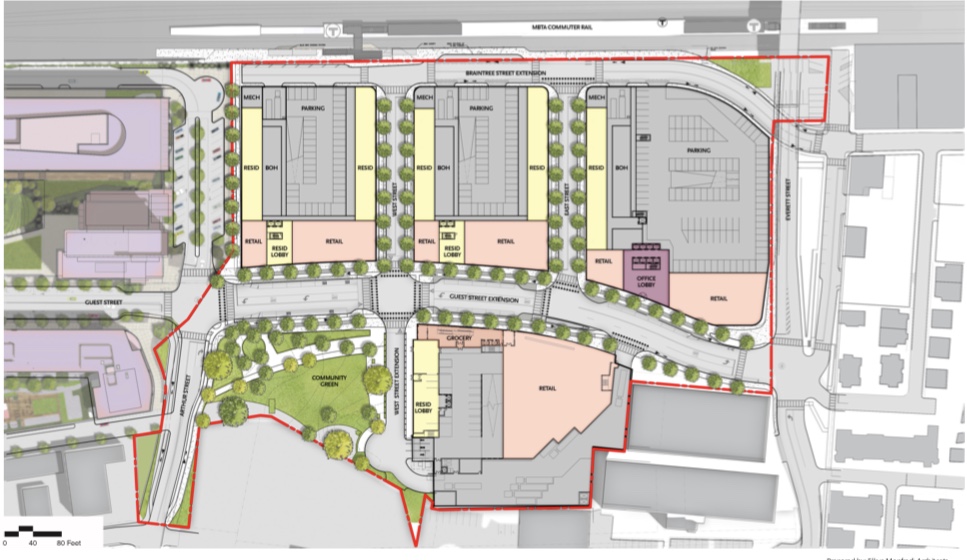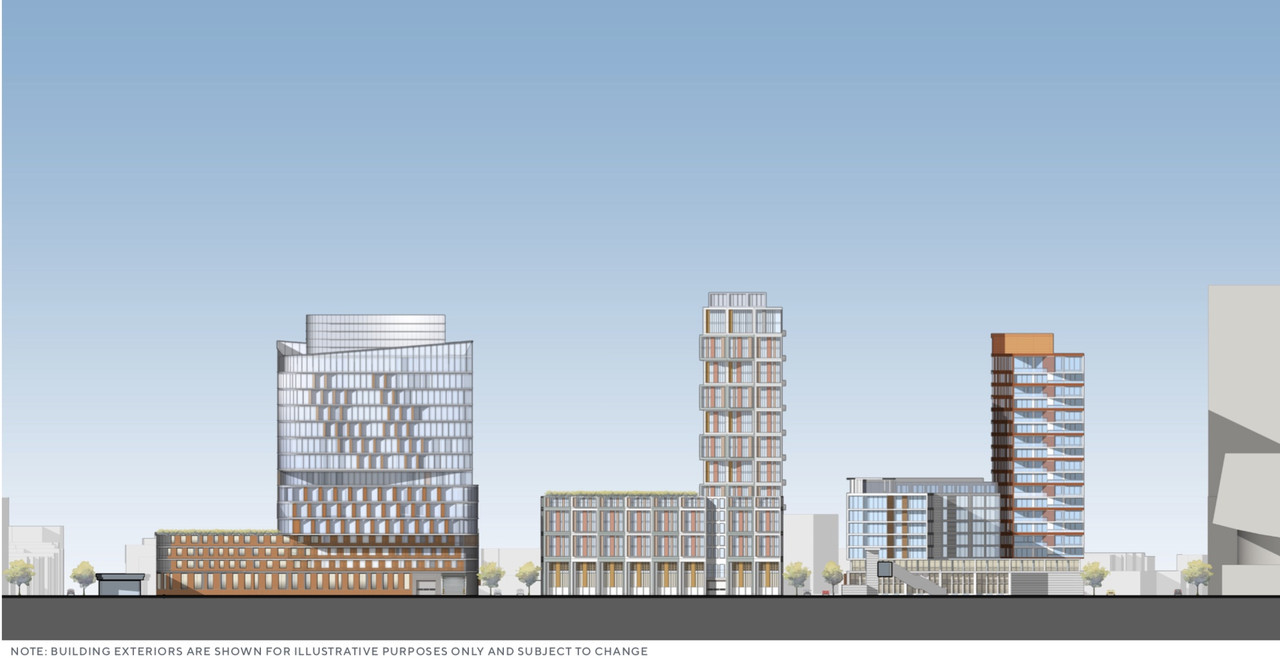- Joined
- May 25, 2006
- Messages
- 7,034
- Reaction score
- 1,875
So they are calling this Allston Yards? What asshole came up with that confusing name?
There a lot of residences and a grocery store. If it's all below the buildings, I don't see why that would cause such a harsh reaction.
Something that's unclear from this batch of renderings is the elevation change of Everett Street as it goes over I-90 and slopes south adjacent to the Allston Yard property. Seeing that Stop & Shop will occupy the 2nd floor of Building 1, do we know yet if there will be an Everett Street entrance to the '2nd level' of this development? That would be clutch.

Why the fuck do we need that much parking next to a commuter rail station?
DPIR:
www.bostonplans.org/documents/proje...on-yards-draft-project-impact-report-volume-i
Pretty significant changes, but it doesn't look all that different. Supermarket has moved from the northeast corner to south of the Guest St. extension (probably because it makes the phasing way easier and takes deliveries off of the roads directly abutting the station). All of the concept drawings for the tall buildings have been replaced with new concept drawings that probably don't represent the actual appearance of the buildings either. Real drawings now exist for the grocery/mid-rise apartment Building A, and they're fine looking.
I still love the stub-end on Braintree St. in these site plans that says "your move, New Balance".


B) physically orients its building entrances away from the available transit? If I get off a train at a 'transit-oriented development', I expect to be greeted by retail, civic space(s), and building entrances. When I get off the train here, though, I will greeted literally by the ass of each building: mechanical areas, truck loading bays, and parking garage entries. That's cold.
Can it be called a transit-oriented development if A) the development triples the amount of parking from what's currently there, and B) physically orients its building entrances away from the available transit? If I get off a train at a 'transit-oriented development', I expect to be greeted by retail, civic space(s), and building entrances. When I get off the train here, though, I will greeted literally by the ass of each building: mechanical areas, truck loading bays, and parking garage entries. That's cold.
Can it be called a transit-oriented development if A) the development triples the amount of parking from what's currently there, and B) physically orients its building entrances away from the available transit? If I get off a train at a 'transit-oriented development', I expect to be greeted by retail, civic space(s), and building entrances. When I get off the train here, though, I will greeted literally by the ass of each building: mechanical areas, truck loading bays, and parking garage entries. That's cold.
^^Mass Ave & Boylston Street seem particularly attractive despite the Pike there. Clarendon, Berkley, & Arlington Streets seem particularly attractive as well. Brookline Ave. Beacon Street. Commonwealth Ave. We've figured out life among the Pike in other neighborhoods, and those neighborhoods succeed at being more desirable because they prioritize the pedestrian despite the Pike.
My thought as well. Transit users get garage entrances and loading docks.
